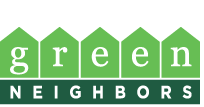Coneflower
- Scientific Name: Echinacea purpurea hybrids
- Garden: Edibles and Herbs Garden
- Plant Type: Herbaceous Perennials
- Evergreen/Deciduous: Deciduous
- Sun/Shade Exposure: Full Sun
- Moisture Requirements: Moist, Well-Drained
Plant Information
Gardeners enjoy the mid-summer bloom of purple coneflower with its lavender ray and disk flowers set atop tall stems. Morphology: This herbaceous perennial can grow to a height of up to 5’ and spread to 2’ across. It features brownish-green stems (few branches) derived from a fibrous root structure. In late June through late July large, daisy-like flowers form on the ends of the stems. Flowers feature drooping rose-purple petals (ray flowers) and coppery-orange, spiny central discs (cone-like shape). Flowers are especially attractive to butterflies and hummingbirds. This plant bears dark green leaves which can be 4”-8” in length. They are lance-shaped and coarsely toothed. They are hairy on both sides. Adaptation: Purple coneflower is easily raised in sunny, well-drained sites. It can survive drought, high summer temperatures and poor soils. This is an excellent perennial for the border, meadow or wildflower garden. Pests: None reported.
Data Source
https://www.pnwplants.wsu.eduPlant Photos









